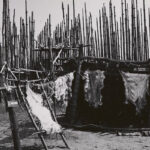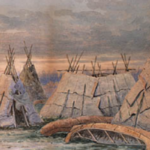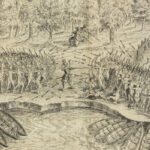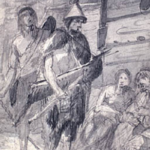The Okanagan Indian Band: People of the Syilx Territory
The Okanagan Indian Band, part of the larger Syilx Nation, has lived in the Okanagan Valley of British Columbia for thousands of years. Known for their close relationship with the land and water, the Syilx people developed a sophisticated culture deeply tied to the natural environment. Despite the profound changes brought by colonization, the Okanagan Indian Band has maintained its identity and traditions, advocating for self-determination, cultural preservation, and environmental stewardship. Their history is a testament to resilience and continuity, rooted in their ancestral territories.
Ancient Origins: The Syilx People and the Okanagan Valley
The Syilx people have inhabited the Okanagan Valley for at least 10,000 years, with archaeological sites revealing evidence of settlements, hunting tools, and fishing weirs. The valley, characterized by its lakes, rivers, and grasslands, provided the Syilx with abundant resources, including salmon, game, berries, and roots. The seasonal movement between different resource areas allowed the Syilx to sustainably manage their environment.
In The Resettlement of British Columbia, historian Cole Harris notes, “The Okanagan Valley, with its fertile landscapes and interconnected waterways, was not only a place of sustenance for the Syilx but also a central part of their cultural and spiritual identity.”
The Syilx language, nsyilxcən, reflects this connection to the land, with its vocabulary and oral traditions deeply rooted in the geography of the Okanagan Valley. The stories of Coyote, a central figure in Syilx oral history, emphasize lessons about respect for the land and the interconnectedness of all living things.
Governance and Social Structure
Before European contact, the Syilx people were organized into extended family groups, each with specific territories and responsibilities. Governance was based on consensus, with leaders chosen for their wisdom and ability to guide the community. The Syilx had a sophisticated legal and social system that emphasized reciprocity, respect, and the sustainable use of resources.
Ceremonial gatherings were central to Syilx life, serving as opportunities to strengthen social bonds, share knowledge, and celebrate the land. Feasts, dances, and storytelling were integral to these events, preserving the community’s history and values.
Marianne Ignace, in Keeping the Stories Alive, observes, “The Syilx people’s ceremonies were not just cultural expressions but frameworks for governance and education, ensuring the continuity of their knowledge and values.”
Trade and Regional Networks
The Syilx were active participants in the trade networks of the Interior Plateau and the Pacific Northwest. Their strategic location allowed them to exchange goods such as salmon, roots, and berries with neighbouring nations, including the Secwépemc, Ktunaxa, and Nlaka’pamux. These trade relationships fostered alliances and cultural exchange.
Historian Bruce Miller, in Paths of the Coast, emphasizes, “The Syilx were integral to a network of trade and diplomacy that connected the diverse peoples of the Interior and coastal regions.”
First Contact with Europeans
The Syilx’s first recorded contact with Europeans occurred in the early 19th century, when fur traders from the Hudson’s Bay Company and the North West Company entered the region. These interactions introduced new goods, such as metal tools and firearms, which were integrated into Syilx daily life. However, European arrival also brought devastating consequences, including the introduction of diseases such as smallpox, which significantly reduced the Syilx population.
Bruce Trigger, in Indigenous Peoples of Canada, writes, “The arrival of Europeans brought both opportunities and profound disruptions to the Syilx people, reshaping their communities and their interactions with the land.”
Colonization and Land Dispossession
The 19th century saw increasing settler encroachment on Syilx lands. The establishment of agriculture, ranching, and transportation infrastructure in the Okanagan Valley disrupted traditional land use and access to resources. The imposition of Indian reserves under the Indian Act confined the Syilx people, including the Okanagan Indian Band, to small parcels of their ancestral territories.
Despite these challenges, the Okanagan Indian Band resisted cultural assimilation. They continued to practice traditional fishing, hunting, and gathering, as well as passing down their language and stories through oral traditions.
Historian Robin Fisher, in Contact and Conflict, notes, “The resilience of the Okanagan Indian Band in the face of colonial pressures demonstrates their determination to preserve their culture and identity.”
Cultural Revitalization and Advocacy
The 20th century marked a period of revitalization for the Okanagan Indian Band. Efforts to preserve the nsyilxcən language have been central to these initiatives, with language programs and cultural education ensuring that future generations remain connected to their heritage. Traditional practices, such as fishing and root digging, have also been revived as a way to reconnect with the land.
The band has played a significant role in advocating for Indigenous rights and self-determination. In 1987, the Okanagan Nation Alliance was formed, bringing together Syilx communities to address shared concerns and advocate for land rights, governance, and cultural preservation.
Margaret Conrad, in A Concise History of Canada, observes, “The Okanagan Indian Band’s leadership in cultural revitalization and Indigenous advocacy reflects their resilience and commitment to shaping their future.”
Environmental Stewardship
The Okanagan Indian Band has long been a leader in environmental stewardship, managing their lands and resources in alignment with traditional ecological knowledge. The band has been involved in initiatives to protect salmon habitats, restore wetlands, and address the environmental impacts of agriculture and development in the Okanagan Valley.
In The Resettlement of British Columbia, historian Cole Harris writes, “The Okanagan Indian Band’s approach to land management reflects a deep understanding of the interconnectedness of ecological and cultural health.”
The Okanagan Indian Band Today
Today, the Okanagan Indian Band is a thriving community that balances traditional practices with modern opportunities for economic development, education, and governance. The band’s partnerships with local governments and organizations highlight their role as stewards of the Okanagan Valley.
The Sncewips Heritage Museum, established by the Okanagan Nation, serves as a hub for cultural education and the preservation of Syilx history and artifacts. The band’s initiatives in language revitalization and environmental conservation ensure that future generations remain connected to their heritage.
A Legacy of Resilience
The history of the Okanagan Indian Band is a testament to their enduring connection to the Okanagan Valley and their determination to preserve their culture and traditions. From their ancient stewardship of the land to their leadership in cultural revitalization and Indigenous advocacy, the Okanagan Indian Band has maintained its identity and place in the region.
As Jean Barman writes in West Beyond the West, “The Okanagan Indian Band’s journey is one of continuity and renewal, a reflection of their strength and determination to preserve their place in the lands they have called home for millennia.”
References
- Barman, Jean. West Beyond the West: A History of British Columbia. University of Toronto Press, 1996.
- Carlson, Keith Thor. Living the River’s Legacy: The Fraser River and Coast Salish History. McGill-Queen’s University Press, 2011.
- Conrad, Margaret. A Concise History of Canada. Cambridge University Press, 2012.
- Fisher, Robin. Contact and Conflict: Indian-European Relations in British Columbia. UBC Press, 1997.
- Harris, Cole. The Resettlement of British Columbia: Essays on Colonialism and Geographical Change. UBC Press, 1997.
- Ignace, Marianne and Ronald E. Ignace. Keeping the Stories Alive: Language, Land, and Culture in Indigenous Communities. University of Toronto Press, 2008.
- Miller, Bruce Granville. Paths of the Coast: Trade and Diplomacy in the Coast Salish World. University of Washington Press, 2005.
- Trigger, Bruce G. Indigenous Peoples of Canada. McGill-Queen’s University Press, 1992.
- Okanagan Nation Alliance. Our Stories, Our Land. Okanagan Heritage Trust, 2000.
- Armstrong, Jeannette. Native Perspectives on Sustainability: The Syilx Way. University of British Columbia Press, 2010.



